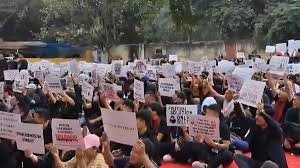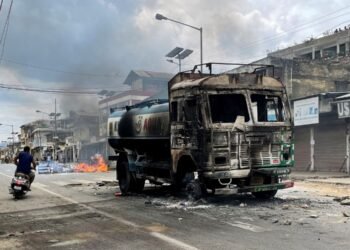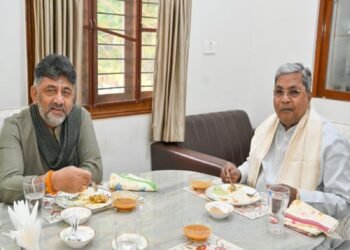Editor’s Note: As part of our ongoing commitment to serve as an advocacy platform for peace in Manipur, we continue to welcome “opinion” pieces from all communities. We encourage individuals to use this space to express their perspectives with sincerity and responsibility. We urge contributors to refrain from language that could be interpreted as inciting violence or hatred. In line with this initiative, we present a write-up by HS Benjamin Matep, Chairman of the Kuki Organisation for Human Rights Trust (KOHUR). Please mail your write-up at: novinkn@gmail.com
By H.S. Benjamin Mate
The Kuki-Zo people—comprising the Chin, Kuki, and Mizo ethno-linguistic groups—are spread across India, Myanmar, and Bangladesh. Though historically united by culture, language, and shared governance structures, they are today divided by colonial borders, fragmented tribal politics, and the absence of a common political platform. This article explores the historical basis of their unity, the forces of external marginalization and internal disunity, and presents a roadmap for cultural revival, political cohesion, and nationhood. Drawing on case studies from all three countries, the article calls for a renewed movement toward a common future, rooted in identity, dignity, and survival.
- Introduction
“Let us stop being a character in someone’s script when we can write our own script.” These words summarize the collective desire for autonomy and self-definition that runs deep within the Kuki-Zo consciousness. The community’s presence across three countries—India, Myanmar, and Bangladesh—has led to a fractured sense of identity, enforced by historical processes but also sustained by internal divisions. However, there exists an underlying cultural and historical unity, often overlooked, that can serve as the foundation for a cohesive political identity and a shared future.
- Historical Context of Fragmentation
2.1 Colonial Cartography and State Borders
During British colonial rule, what was once a culturally contiguous region was divided into separate administrative units:
- Chin Hills (Burma),
- Lushai Hills (present-day Mizoram), and
- Manipur Hills, including present-day Kuki-dominated areas.
Colonial administrators designated the same people as “Chin” in Burma, “Kuki” in India, and “Lushai” (later Mizo) in the Lushai Hills, despite shared languages, customs, and kinship systems. The division was administrative, not ethnological.
After independence, postcolonial states further deepened these boundaries, with no mechanisms to preserve the community’s internal cohesion:
- India: Manipur, Mizoram, Assam, Nagaland
- Myanmar: Chin State, Sagaing Region
- Bangladesh: Chittagong Hill Tracts
READ: Shah Slams UPA, Hails Modi’s Iron Resolve on Terror
Case Study: The 1946 Mizo Union Memorandum called for the unification of the Chin-Kuki-Mizo areas under one administrative unit. Though not realized, it reflects a historic consciousness of unity thwarted by geopolitical forces.
2.2 Shared Historical Identity: Chin-Kuki-Mizo as One People
Scholars and institutions have long affirmed the ethnolinguistic unity of these groups:
- The Chin Hills Regulation of 1896 and the Lushai Hills District Regulation of 1898 both recognized indigenous customary laws and chieftainship systems.
- Linguists such as VanBik (2009) and Shafer (1955) categorize the community’s dialects under the Kuki-Chin linguistic group, showing over 80% lexical similarity between most dialects.
- The Chin State Constitution (Myanmar, 1994) formally recognized the Mizo and Hmar people as part of the Chin family.
Case Study: The Mizo National Front (MNF) in the 1960s and 70s envisioned a Greater Mizoram (Zoram) that would include Chin and Kuki areas, showing a long-standing political aspiration for unification.
- State-Induced Marginalization and Violence
3.1 India (Manipur & Northeast)
The ongoing ethnic conflict in Manipur (2023–2025) has laid bare the systemic discrimination faced by the Kuki-Zo in India. Armed Meitei militias, supported or tolerated by state apparatuses, have targeted Kuki-Zo settlements. Over 60,000 people have been displaced, hundreds killed, and entire villages like Torbung, Moreh, and Kangvai razed.
- Despite being Scheduled Tribes under the Constitution, the Kuki-Zo lack effective political power in Manipur’s valley-dominated state institutions.
- Kuki-dominated hill districts are excluded from infrastructure development, higher judiciary representation, and administrative authority.
Case Study: The exclusion of Kuki-Zo candidates in Manipur’s civil services and judiciary appointments is a recurring pattern, despite constitutional guarantees under Article 371C.
3.2 Myanmar (Chin State & Sagaing Region)
Since the 2021 military coup, Chin State and Sagaing Region have seen some of the worst violence in Myanmar:
- Villages like Thantlang and Falam have been torched.
- Over 30% of Chin population is now internally displaced or refugees in India, mostly in Mizoram.
- The military has banned the teaching of Chin languages, destroyed churches, and imposed martial law in several districts.
Case Study: The Chin National Front (CNF) has called for a federal union and ethnic self-determination, but it lacks coordination with its Kuki-Zo counterparts in India and Bangladesh.
READ: Exclusive: SIR Amid Ruins— Bihar’s SIR Redux in Manipur
3.3 Bangladesh (Chittagong Hill Tracts)
In the remote hill areas of Bandarban and Rangamati, small Zo communities such as Bawm, Pankhua, and Lushai face discrimination:
- Armed encroachments by Bengali settlers with military backing have dispossessed many of their traditional lands.
- Cultural erasure continues, with no educational support for native dialects or community-specific development schemes.
Case Study: The 1997 CHT Peace Accord, while granting limited autonomy to the larger Jumma peoples, has done little for the smaller Kuki-Chin communities like the Bawm or Pangkhua.
- The Internal Roots of Division
4.1 Tribalism and Clan Loyalties
Although we share a civilizational history, we have been divided by tribal names—Hmar, Thadou, Paite, Zou, Simte, Chin, Mizo—each now seeking separate Scheduled Tribe status, separate development boards, or political representation.
- These divisions are often incentivized by states seeking to weaken collective resistance.
- Community elites have sometimes capitalized on such tribalism for narrow political gains.
Example: The split between “Kuki” and “Zomi” identity movements in Manipur in the 1990s diluted the political capital of both.
4.2 The ‘Lion’s Tail vs. Cat’s Head’ Mentality
This metaphor reflects the preference of many leaders to align with dominant state actors, even in subservient roles, rather than to pursue independent political vision. This has stalled the emergence of a unified political entity for the Kuki-Zo.
- From Victimhood to Nationhood: A New Political Imagination
5.1 Embracing Cultural Kinship and Heritage Preservation
The Kuki-Zo people have a rich cultural tapestry:
- Festivals: Chapchar Kut, Mim Kut, and Chavang Kut are celebrated with variations across all regions.
- Oral traditions: Shared myths like Zing Hlaw, Pathian worship, and ancestor stories affirm deep spiritual continuity.
- Customary laws: Toltheh and Sakhua practices are found among all sub-groups.
However, these are endangered:
- Urban youth increasingly lack fluency in native dialects.
- Traditional institutions like Lal (chief) courts are being replaced by state systems.
Recommendation: Establish a Kuki-Zo Cultural Heritage Council to safeguard rituals, revive endangered dialects, and digitize oral histories across borders.
5.2 Cross-Border Solidarity and Coordination
A pan-Kuki-Zo Transnational Political and Cultural Council must be created to:
- Coordinate lobbying at UN Indigenous forums.
- Develop common educational curricula.
- Advocate for regional autonomy and ethnic federalism in each country.
Model: The Sámi Council in Scandinavia offers a precedent for transborder Indigenous unity across Norway, Sweden, and Finland.
5.3 One Political Entity: The Imperative of Unification
Only a unified Kuki-Zo homeland—federal, autonomous, or confederal—can safeguard identity, dignity, and security.
This is not an irredentist fantasy but a moral imperative grounded in:
- Historical contiguity (geographical and cultural)
- Shared persecution
- Survival as a people
Proposal: Initiate a Kuki-Zo National Dialogue among all sub-groups to develop a political charter or manifesto for unification and constitutional recognition in their respective countries.
- Conclusion: A Call to Write Our Own Script
The current moment—marked by trauma in Manipur, repression in Myanmar, and erasure in Bangladesh—is a turning point. We either continue to live as fragments in others’ nations or unite as one people.
Let this be the generation that:
- Recovers our shared memory,
- Preserves our cultural treasures,
- Builds transnational institutions, and
- Writes our collective future.
As the Chin-Kuki-Mizo, we are not remnants of a lost past. We are custodians of a shared civilization. It is time to stop being characters in someone else’s script and write our own—together.
References
- Lehman, F.K. (1963). The Structure of Chin Society. University of Illinois Press.
- Sakhong, Lian H. (2003). In Search of Chin Identity. NIAS Press.
- VanBik, Kenneth (2009). Proto-Kuki-Chin. STEDT Monograph Series.
- Kipgen, Nehginpao (2021). Democratization of Myanmar. Routledge.
- Haokip, Thongkholal (2013). India’s Look East Policy and the Northeast. SAGE Publications.
- Shafer, Robert (1955). Classification of the Sino-Tibetan Languages. Word, 11(1).
- Human Rights Watch Reports (2022–2024)
- Chin Human Rights Organization (CHRO), 2023
- NHRC India Reports on Manipur Conflict, 2023–2025
- U.S. Department of State: 2024 Report on Human Rights in Myanmar













